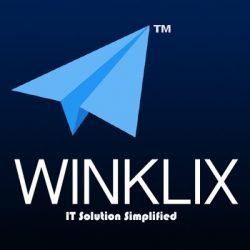The mobile app landscape in 2025 is buzzing with the transformative power of Large Language Models (LLMs) like ChatGPT. What was once a futuristic concept is now a practical, scalable reality, offering unprecedented opportunities to create intelligent, intuitive, and hyper-personalized user experiences. If you’re a mobile app developer or a business looking to stay ahead, integrating LLMs isn’t just an option—it’s a necessity.
This guide will explore the why, what, and how of bringing ChatGPT and other LLMs into your mobile applications in 2025, outlining the benefits, key trends, challenges, and best practices.
The Irresistible Pull of LLMs in Mobile Apps
The global AI-powered mobile app market is projected to reach staggering figures by 2025, with over 75% of mobile interactions expected to be AI-powered. This isn’t just about cool features; it’s about delivering tangible value:
- Hyper-Personalization: Imagine an e-commerce app that understands your exact style preferences and recommends outfits, or a fitness app that adapts workout plans based on your real-time performance and mood. LLMs enable deep user understanding, leading to highly tailored content, recommendations, and interactions.
- Enhanced User Engagement: Dynamic, conversational interfaces powered by LLMs can turn static apps into interactive companions. From intelligent chatbots resolving customer queries instantly to AI-guided onboarding tutorials, users feel more connected and understood.
- Automated Content Creation & Summarization: For content-heavy apps (media, e-commerce, writing tools), LLMs can generate or suggest content in real-time, summarize lengthy articles, or even help users draft emails, saving time and improving productivity.
- Smarter Customer Support: AI-powered chatbots can handle a significant percentage of user inquiries 24/7, reducing response times, lowering support costs, and freeing human agents for more complex issues.
- Improved Accessibility & Inclusivity: Voice interaction, real-time multilingual support, and intelligent content adaptation make apps more accessible to a wider audience, including those with disabilities or language barriers.
- Predictive Analytics: LLMs can analyze user behavior and system performance to forecast trends, anticipate user needs, and enable proactive adjustments, from predicting demand to identifying potential issues before they arise.
Key Trends Shaping LLM Integration in 2025
As we navigate 2025, several trends are influencing how LLMs are integrated into mobile apps:
- Smaller, More Efficient Models: The push for compact and efficient models (like TinyLlama or Mixtral) is making LLMs more feasible for mobile devices with limited computational resources. Sparse expert models, which activate only relevant parts of the network, further improve speed and energy efficiency.
- Real-time Fact-Checking and External Data Access: LLMs are becoming better at integrating live data from the internet to validate answers and reduce hallucinations. Future models will increasingly include references and citations by default, boosting accuracy and transparency.
- Multimodal Capabilities: Beyond text, modern LLMs can now process and generate text, images, audio, and even video. This opens doors for richer interactions, such as analyzing visual content in a shopping app or generating music based on a user’s mood.
- Autonomous Agents: LLM-powered agents that can make decisions, interact with tools, and take actions without constant human input are a significant trend. Imagine an app where an AI agent can schedule meetings or analyze reports on your behalf.
- Domain-Specific LLMs: Instead of general-purpose models, we’re seeing a rise in LLMs trained for specific fields (e.g., BloombergGPT for finance, Med-PaLM for healthcare). These specialized models offer higher accuracy and fewer errors within their domain.
- Focus on Safety, Alignment, and Bias Mitigation: As LLMs become more pervasive, responsible AI practices, robust oversight, and bias mitigation techniques (like Reinforcement Learning from Human Feedback – RLHF) are paramount.
- Enhanced Security and Privacy: The OWASP Top 10 for LLMs in 2025 highlights critical security risks like prompt injection, sensitive information disclosure, and supply chain vulnerabilities. Developers are implementing safeguards like input/output filtering, access controls, and privacy-preserving methods (e.g., federated learning).
The Integration Journey: A Step-by-Step Breakdown
Integrating LLMs into your mobile app in 2025 typically involves these crucial steps:
- Define Your Use Case and Goals: Clearly articulate what problem the LLM will solve. Is it customer support, content generation, personalized recommendations, or something else? Set measurable goals (e.g., reduce customer response time by X%, increase user engagement by Y%).
- Choose the Right LLM Model and API:
- Proprietary APIs (e.g., OpenAI’s GPT-4.5, Google’s Gemini, Anthropic’s Claude): These offer polished APIs, robust performance, and dedicated support, often with a cost based on usage. They are generally easier to integrate for common use cases.
- Open-Source LLMs (e.g., Llama 4, Mistral): Offer full customization and fine-tuning capabilities, transparent codebases, and can be more budget-friendly. However, they might require more technical expertise for deployment and optimization.
- Consider “Smaller, Faster” Models: For on-device inference or scenarios requiring low latency, explore quantized or specialized smaller models that can run more efficiently on mobile hardware.
- Set Up Your Development Environment:
- Backend Integration: For most LLMs, you’ll need a backend server to handle API requests, process responses, and manage context. Utilize frameworks like Node.js, Python with Flask/Django, or Spring Boot.
- Mobile Libraries: Use appropriate libraries for making API requests from your mobile app (e.g., Retrofit or OkHttp for Android, Alamofire for iOS).
- Implement Backend Integration (API Calls & Prompt Engineering):
- API Key Management: Securely store and manage your API keys.
- Prompt Engineering: Craft effective prompts to guide the LLM’s responses. This is a critical skill for getting desired outputs and maintaining context.
- Context Management: Implement mechanisms to maintain conversation history and context across interactions, crucial for natural, multi-turn dialogues.
- Design and Implement the User Interface (UI):
- Mobile-Optimized Experience: Design a user-friendly interface that facilitates natural interaction with the AI, whether it’s text-based chat, voice input, or multimodal interactions.
- Asynchronous Programming: Use threads (Java), coroutines (Kotlin), or async/await (Swift) to ensure the UI remains responsive while waiting for LLM responses.
- Error Handling and Feedback: Clearly communicate when the AI is processing, if there are errors, or if it needs more information.
- Handle Data and Security:
- Data Privacy: Implement strong privacy protocols, anonymize sensitive data, and ensure compliance with regulations like GDPR or CCPA. Be transparent about data usage.
- Security Measures: Protect against prompt injection attacks, sensitive information disclosure, and supply chain vulnerabilities. Use secure API authentication and encryption.
- Input/Output Filtering: Validate and sanitize both user inputs and LLM outputs to prevent malicious activity or inappropriate content.
- Test and Optimize:
- Thorough Testing: Rigorously test the integration for response accuracy, processing time, user satisfaction, and edge cases.
- Performance Monitoring: Track metrics like latency, token usage, and API call success rates.
- Iterative Refinement: Continuously fine-tune prompts, explore different models, and optimize the integration based on user feedback and performance data.
Challenges to Navigate
While the benefits are immense, integrating LLMs presents its own set of challenges:
- Computational Demands and Mobile Constraints: LLMs are resource-intensive. Running large models directly on-device can drain battery and impact performance. A hybrid approach (cloud-based LLM with optimized on-device inference for specific tasks) is often preferred.
- Latency: Network latency can impact user experience, especially for real-time interactions. Optimizing API calls, caching responses, and using efficient data transfer protocols are crucial.
- Cost Management: API usage for proprietary LLMs can become expensive, especially with high volumes of requests. Optimize token usage and choose models appropriate for your budget.
- Data Quality and Bias: The performance of an LLM heavily depends on the data it was trained on. Addressing potential biases and ensuring data quality is critical for accurate and fair responses.
- Prompt Engineering Complexity: Crafting effective prompts to get desired outputs can be challenging and requires ongoing refinement.
- Security and Ethical Concerns: As mentioned earlier, prompt injection, data privacy, and the potential for biased or harmful outputs require careful consideration and mitigation strategies.
- Rapidly Evolving Landscape: The LLM space is dynamic. Staying updated with new models, APIs, and best practices is an ongoing effort.
The Future is Conversational
By 2025, mobile applications are no longer just tools; they are intelligent companions capable of understanding, conversing, and anticipating user needs. Integrating ChatGPT and other LLMs is no longer a luxury but a fundamental shift in how we build and experience mobile software. By understanding the trends, embracing best practices, and proactively addressing challenges, developers can unlock the full potential of AI to create truly innovative and engaging mobile experiences for years to come.


